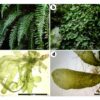Rabies is a deadly disease. Without vaccination, a rabies infection is nearly 100% fatal once someone develops symptoms. Texas has experienced two rabies epidemics in animals since 1988: one involving coyotes and dogs in south Texas, and the other involving gray foxes in west central Texas. Affecting 74 counties, these outbreaks led to thousands of people who could have been exposed, two human deaths and countless animal lives lost.
In 1994, Gov. Ann Richards declared rabies a state health emergency. The Texas Department of State Health Services responded by launching the Oral Rabies Vaccination Program to control the spread of these wildlife rabies outbreaks.
Since 1995, the program has distributed over 53 million doses of rabies vaccine over 758,100 square miles (nearly 2 million square kilometers) in Texas by hand or aircraft. Rabies cases in dogs and coyotes went from 141 to 0 by 2005, and rabies cases in foxes went from 101 to 0 by 2014. By 2004, one canine rabies variant was effectively eliminated from Texas, and another variant was substantially controlled.
We are researchers who began studying wildlife rabies and oral vaccination in the 1980s. From providing a proof of concept in using oral vaccines in raccoons to being among the first to use new rabies vaccines in the 1990s, we were on the ground floor of efforts to contain this deadly virus.
Decades of vaccine research led to one of the most successful public health projects in Texas. And we’re hopeful it could provide a road map for the use of mass wildlife vaccination to prevent future outbreaks.

During the first years of the Texas Oral Rabies Vaccination Program, researchers used Canadian Twin Otter aircraft to deliver vaccine baits across areas affected by rabies outbreaks.
Rodney E. Rohde/Texas DSHS Zoonosis Control Division.
Developing the oral rabies vaccine
The Texas Oral Rabies Vaccination Program benefited greatly from the work of multiple researchers over prior decades.
The mid-20th century saw several major developments in rabies control. With the failure of efforts to poison or trap infected animals, virologist and veterinarian George Baer at the U.S. Centers for Disease Control and Prevention recognized the need for a different strategy to prevent and control wildlife rabies. His and his colleagues’ work in the 1960s led to the concept of oral rabies vaccination. While orally vaccinating wildlife would help combat infection at its source, it was previously thought to be logistically unfeasible given the large range of target animals.
By the late 1970s, European researchers began the first field trials to orally vaccinate foxes against rabies. Small plastic containers were filled with vaccines and placed into baits, such as chicken heads. Over 50,000 of these vaccine-laden baits were distributed over four years in fox habitats in forests and fields.




